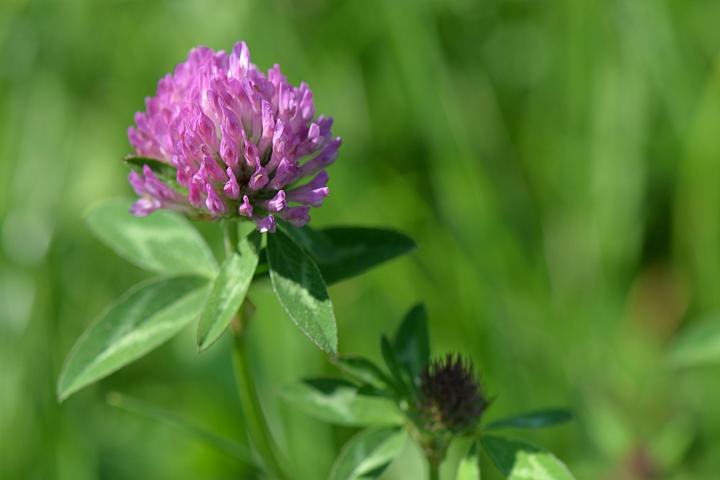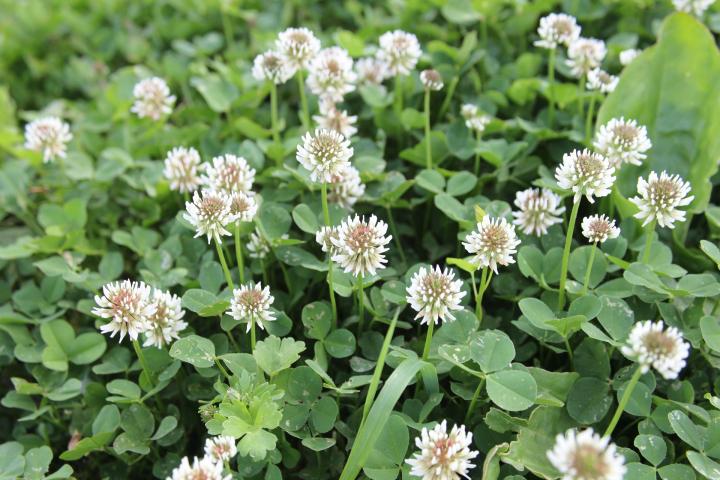At one time, most yards had at least some white clover growing in them. It was a world before chemicals, and clover was part of seed blends because it improved the soil—and the condition of the lawn. Gardeners are returning to recognizing the benefits of clover in lawn grass mixtures—or even as a replacement for grass. Learn more.
Move on from the quest for a perfect lawn of just turf grass. It’s not natural and ends up requiring chemicals. Before World War II and the advent of chemicals, clover was used as a great companion with turf grass. It was added to seed blends, along with fescues, ryegrasses and Kentucky bluegrass, because it helped grass thrive.
See the incredible benefits of clover below and you’ll wonder why you don’t grow clover!
BENEFITS OF CLOVER
- Being a legume, the clover plant fixes poor soil! Clover has the ability to convert nitrogen into fertilizer using bacteria in it’s root system, practically eliminating the need for additional fertilization.
- White clover (Trifolium repens) is the most common clover for lawns. Left uncut, white clover grows 4 to 8 inches tall and produces small white flowers that are often tinged with pink. It’s a rapid spreader that crowds out broadleaf weeds while growing harmoniously with grass.
- Like white clover, red clover (Trifolium pratense) is native to Europe, but has been naturalized in North America. It produces attractive purple flowers and typically grows taller than white clover (a little too tall compared to lawn grass).
- Clover is among the first plants to green up and thrive in the spring.
- It’s extremely drought-resistant plant and will keep its cool-green color even during the hottest and driest parts of summer.
- Clover will also thrive in areas that are poorly drained or too shady for a conventional lawn.
- The flowers not only create a beautiful visual effect, but also bring in bees, butterflies, and beneficial insects that prey on garden pests.
- Honeybees rarely sting when they are away from their hive, but if they make you uncomfortable or you are allergic to bee stings, simply have the lawn mowed more often when clover is in bloom. Or, grow clover on surfaces where there is little activity on the lawn and the desired result is more aesthetic than functional.

PLANTING CLOVER
You can plant clover by itself for ground cover, but it stands up better to foot traffic when combined with lawn grass.
- Only 5 to 10% by weight of tiny clover seed needs to be mixed with the recommended amount of grass seed to create a thick stand.
- When adding clover to an existing lawn, first mow it close and remove any thatch to allow the seed to fall to the soil surface.
- To sow clover alone, mix it with enough sand to facilitate spreading. About 2 ounces of clover is needed for every 1,000 square feet of lawn.
- Since clover has a low growth habit, it can go without mowing all season long if desired. Or, just mow a couple of times a year to maintain its appearance.
LUCK OF THE CLOVER
Finding a four-leaf clover is considered good luck. Surely it must be, because on average there is only one of them for every 10,000 clovers with three leaves. But even if you never find a four-leaf specimen, just having clover growing in your lawn will keep it greener longer with minimum care, which we consider to be extremely good luck.
Source / The Old Farmer’s Almanac

